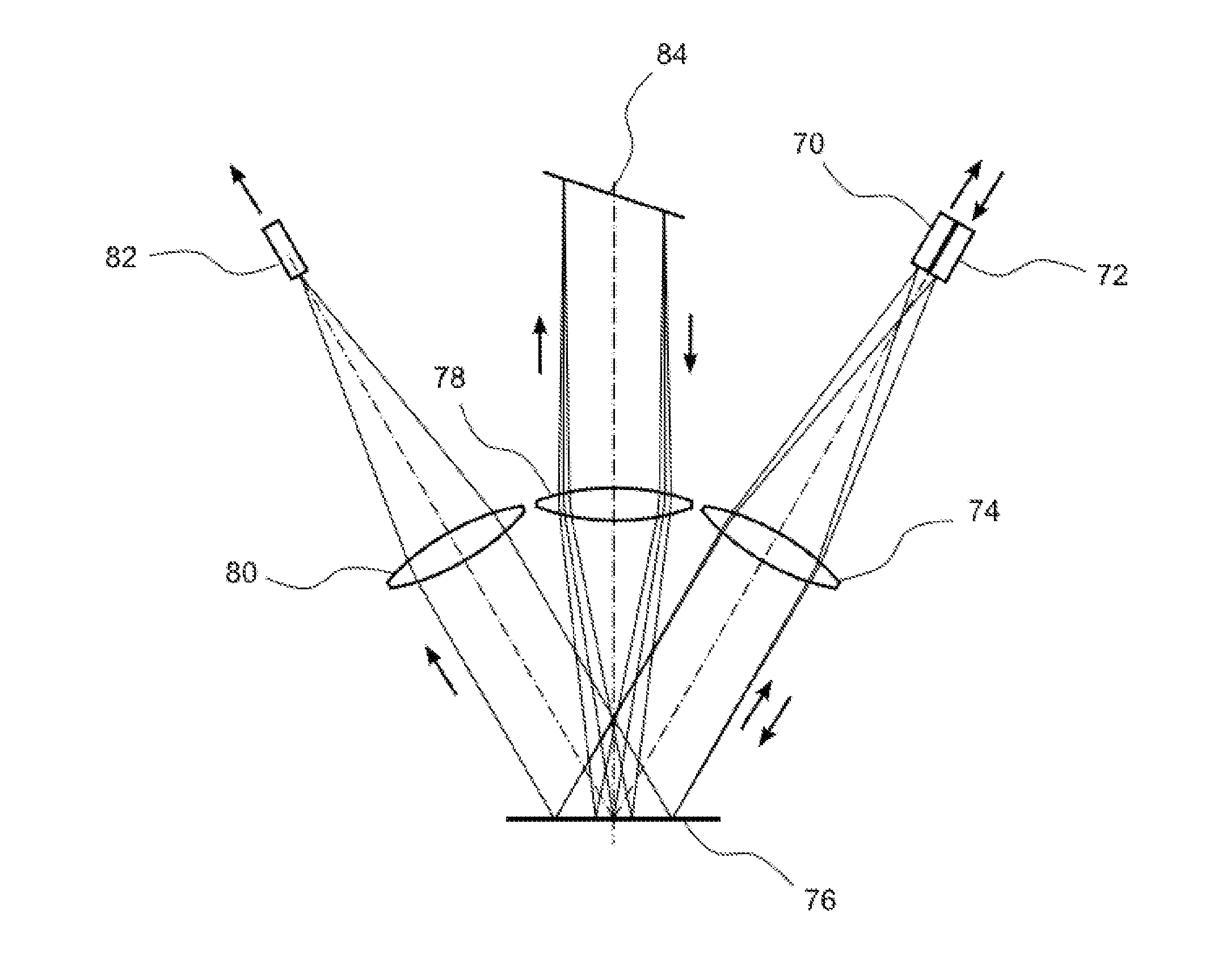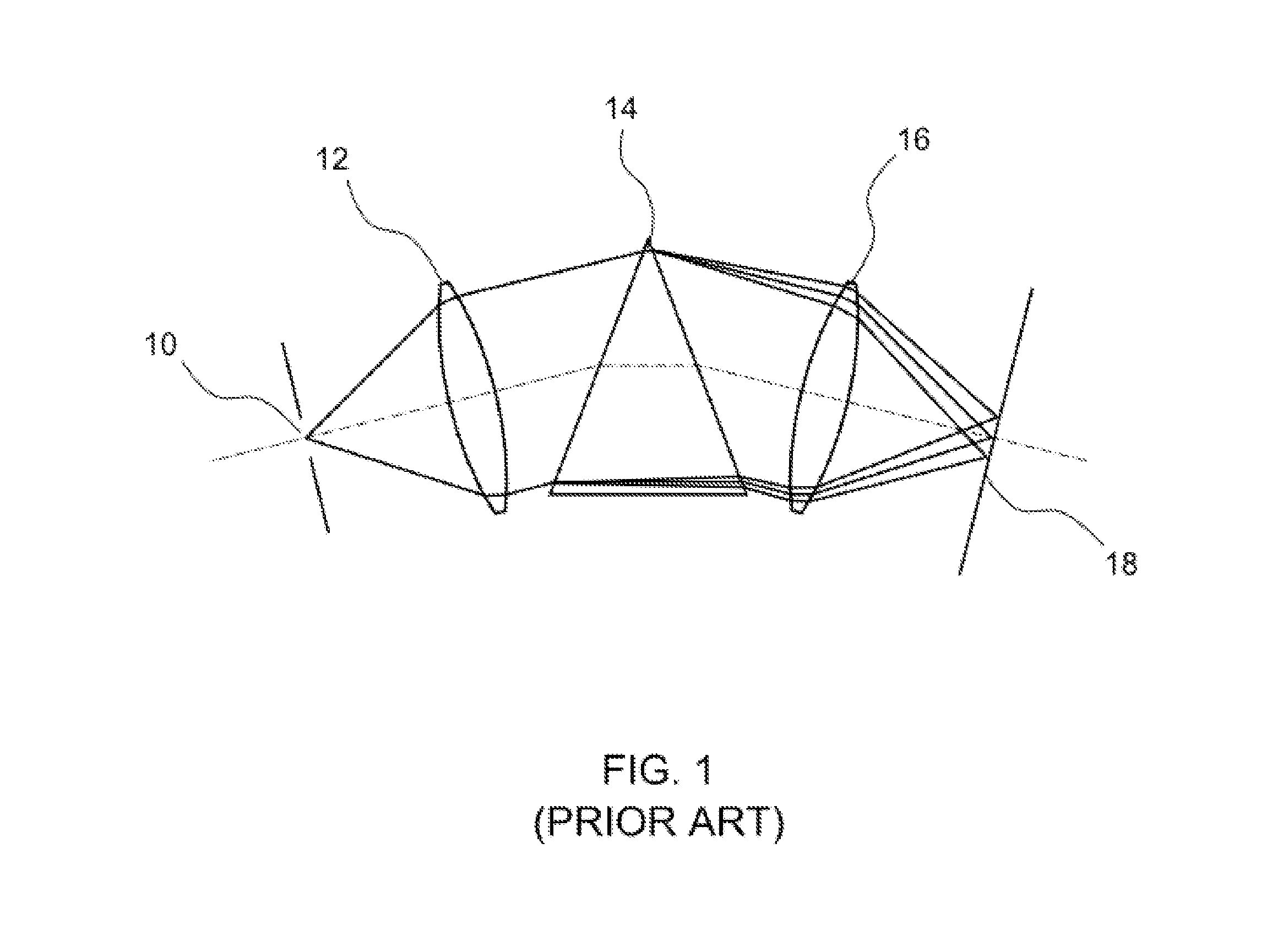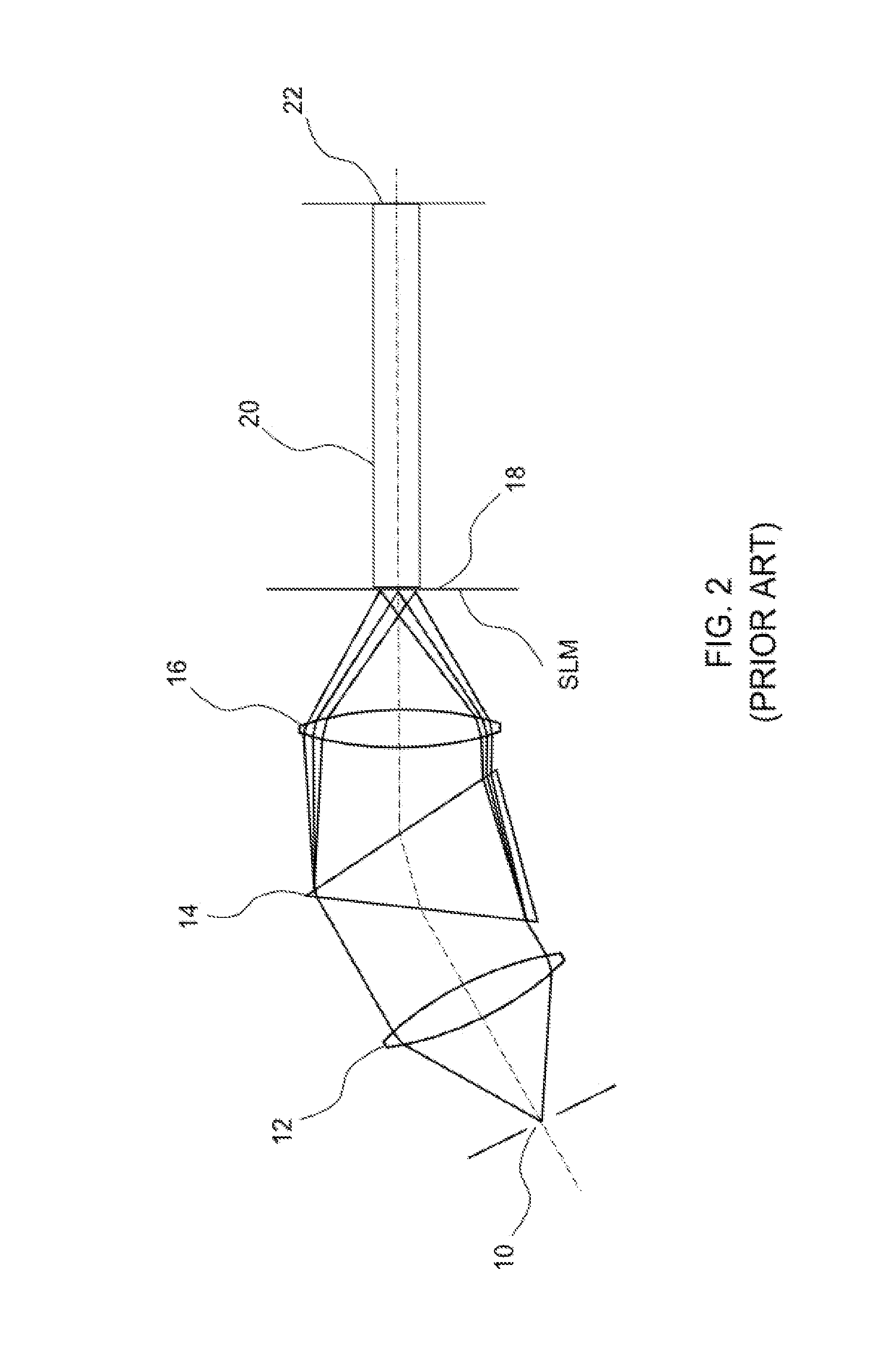Light sources for spectrally controlled interferometry
a light source and interferometer technology, applied in the field of interferometry, can solve the problems of reducing the utility of spectrally modulated sources, reducing the efficiency and reducing the cost and accuracy of measurement, so as to improve the utility of spectral modulation sources.
- Summary
- Abstract
- Description
- Claims
- Application Information
AI Technical Summary
Benefits of technology
Problems solved by technology
Method used
Image
Examples
Embodiment Construction
[0027]As used in this disclosure, “white light” is intended to refer to any broadband light of the type used in the art of white-light interferometry, typically having a bandwidth on the order of many nanometers. With reference to light, the terms “frequency” and “wavelength” are used alternatively, as commonly done in the art, because of their well known inverse relationship. “OPD” and “time delay” are used alternatively because of their space / time relationship in interferometry. Similarly, “sine” and “cosine,” as well as related terms, are used alternatively unless specifically indicated otherwise. As used herein, the terms “modulate” and “modulation” in connection with a light source refer in the broadest sense to include any alteration of the frequency distribution, amplitude distribution or phase distribution of energy produced by the light source, and the synthesis of a light signal having a desired frequency, amplitude and phase distribution by any means. With reference to a ...
PUM
| Property | Measurement | Unit |
|---|---|---|
| angle | aaaaa | aaaaa |
| integration time | aaaaa | aaaaa |
| white light interferometry | aaaaa | aaaaa |
Abstract
Description
Claims
Application Information
 Login to View More
Login to View More - R&D
- Intellectual Property
- Life Sciences
- Materials
- Tech Scout
- Unparalleled Data Quality
- Higher Quality Content
- 60% Fewer Hallucinations
Browse by: Latest US Patents, China's latest patents, Technical Efficacy Thesaurus, Application Domain, Technology Topic, Popular Technical Reports.
© 2025 PatSnap. All rights reserved.Legal|Privacy policy|Modern Slavery Act Transparency Statement|Sitemap|About US| Contact US: help@patsnap.com



